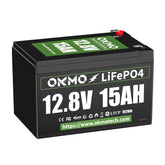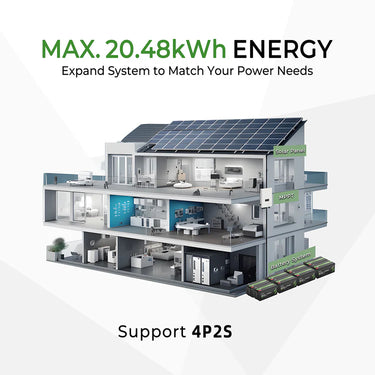Boat battery last ? Low temperatures and waterproofing are important !

The lifespan of a boat battery depends on several factors, including battery type, usage patterns, and—most critically—environmental conditions. Two of the biggest challenges for marine batteries are extreme cold temperatures and exposure to water and humidity, both of which can drastically shorten battery life. In this article, we’ll explore how these factors affect battery longevity and why lithium batteries (particularly LiFePO4) outperform traditional lead-acid batteries in durability, cold-weather performance, and waterproofing.
1. Typical Lifespan of Different Boat Battery Types
Before diving into environmental impacts, let’s compare the average lifespan of common marine batteries:
| Battery Type | Average Lifespan | Key Characteristics |
|---|---|---|
| Flooded Lead-Acid | 2–5 years | Requires maintenance, prone to sulfation |
| AGM (Absorbent Glass Mat) | 3–6 years | Sealed, better vibration resistance |
| Gel Battery | 4–7 years | Deep-cycle, spill-proof, slower discharge |
| Lithium (LiFePO4) | 8–15 years | Lightweight, long lifespan, superior cold performance |
Why such a big difference? Because lithium iron phosphate (LiFePO4) batteries are engineered to withstand harsh conditions far better than lead-acid alternatives.
2. How Extreme Cold Affects Battery Lifespan
a. Lead-Acid Batteries Struggle in Cold Weather
-
Reduced Capacity: At 0°C (32°F), lead-acid batteries lose ~20% capacity; at -20°C (-4°F), they may lose ~50%.
-
Sulfation Risk: Cold temperatures slow chemical reactions, leading to sulfation (crystal buildup on plates), which permanently reduces battery capacity.
-
Difficulty Charging: Lead-acid batteries charge inefficiently in cold weather, leading to undercharging and further degradation.
b. Lithium Batteries Handle Cold Far Better
-
LiFePO4 batteries operate efficiently in -20°C (-4°F) and can even function (with reduced performance) down to -30°C (-22°F).
-
Built-in Battery Management Systems (BMS) prevent damage from cold charging.
-
No sulfation issue, meaning they maintain capacity much longer than lead-acid.
Result: Lithium batteries last 2–3x longer in cold climates compared to lead-acid.

3. How Water and Humidity Impact Battery Longevity
a. Water Damage in Lead-Acid Batteries
-
Flooded lead-acid batteries can leak, leading to corrosion and short circuits.
-
AGM/Gel batteries are sealed but still vulnerable to terminal corrosion from saltwater exposure.
-
Moisture accelerates sulfation, reducing lifespan.
b. Lithium Batteries Are Naturally More Water-Resistant
-
Fully sealed design (no vents, no liquid electrolyte).
-
Corrosion-resistant terminals (stainless steel or coated connectors).
-
No risk of acid leaks, making them safer in wet environments.
Result: Lithium batteries are far more durable in humid, wet, or saltwater conditions.
4. Additional Factors That Affect Boat Battery Life
While cold and water are major concerns, other factors also play a role:
| Factor | Effect on Lifespan |
|---|---|
| Depth of Discharge (DoD) | Lead-acid degrades if discharged below 50%; Lithium can handle 80–100% DoD |
| Charging Habits | Undercharging/overcharging harms lead-acid; Lithium BMS prevents damage |
| Vibration & Shock | Lead-acid plates can crack; Lithium is solid-state and more durable |
| Storage Conditions | Lead-acid self-discharges faster; Lithium holds charge longer |


5. Why Lithium (LiFePO4) Batteries Are the Best Choice for Boats
Given the challenges of cold weather, water exposure, and general marine conditions, lithium iron phosphate (LiFePO4) batteries are the superior choice for several reasons:
a. Longer Lifespan (2–3x Lead-Acid)
-
3,000–5,000 cycles (vs. 300–1,000 for lead-acid).
-
No memory effect, meaning they don’t lose capacity over time.
b. Superior Cold-Weather Performance
-
Operational down to -30°C (-22°F) (with heating pads in extreme cases).
-
No capacity loss in typical marine cold conditions.
c. Waterproof & Corrosion-Resistant
-
Fully sealed (IP67 rating in many models).
-
No maintenance needed, unlike flooded lead-acid.
d. Lighter & More Efficient
-
Half the weight of lead-acid, improving boat performance.
-
Faster charging, so less engine runtime needed.
e. Built-in Safety Features
-
BMS protects against overcharge, deep discharge, and temperature extremes.
-
No risk of hydrogen gas leaks (unlike lead-acid).
6. Recommended Lithium Marine Batteries
If you’re upgrading, consider these top-performing LiFePO4 marine batteries:
-
Dakota Lithium 12V 100Ah – Excellent cold-weather performance, rugged case.
-
Battle Born 12V 100Ah – Reliable, with a built-in BMS.
-
Renogy Deep Cycle LiFePO4 – Affordable, good for moderate climates.
-
Relion RB100 – High discharge rate, ideal for trolling motors.
7. Conclusion: Maximizing Your Boat Battery’s Lifespan
-
Lead-acid batteries last 2–7 years but suffer in cold and wet conditions.
-
Lithium (LiFePO4) batteries last 8–15 years, with better cold resistance, waterproofing, and efficiency.
-
For long-term savings and reliability, lithium is the best investment.
If you boat in cold climates, saltwater, or off-grid environments, switching to lithium will extend battery life, reduce maintenance, and improve performance. While the upfront cost is higher, the long-term benefits make it the smart choice for serious boaters.









